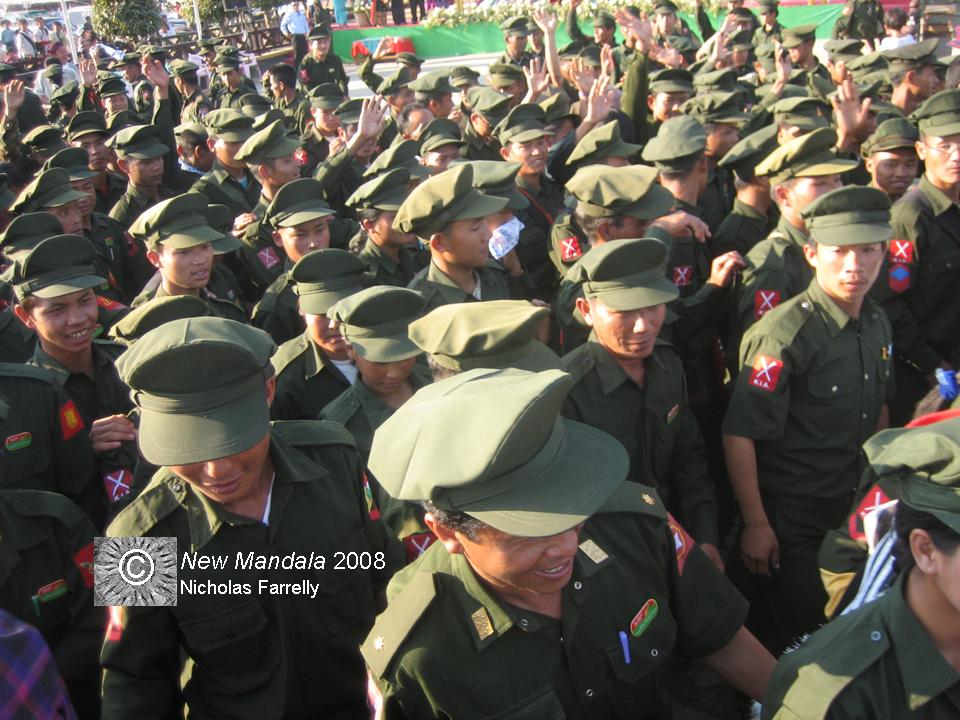Kachin Independence Army troops in Myitkyina, Kachin State, January 2008
Over the past few days details about the renewed civil war in northern Burma have come thick-and-fast.
The Kachin Independence Army (KIA) liaison office in Myitkyina has been closed. Heavy fighting has been reported across the eastern Kachin State. Bridges have been demolished on strategic roads in the Kachin State and also in northern Shan State. It seems likely that roaming KIA commandos played some role. Ultimatums are being issued. Reinforcements called. Fighters killed and injured. Bases and other strategic sites have been shelled.
And an eerie quiet has now reportedly descended over the battlefields as the prospect of more fierce fighting looms.
Nobody on the Kachin side was unprepared for renewed hostilities. Even after almost two decades of ceasefire “law and order” and “peace and development” there is a realistic awareness among the Kachin about the Burmese government and its priorities. When I was in the Kachin State earlier in 2011 “war talk” was thicker on the ground than ever before.
There was an almost unanimous expectation that this year would bring a new round of conflict.
The areas that have seen the heaviest fighting are difficult to access at the best of times, except if you duck across from the Chinese side of the border. And so information will only trickle out; independent confirmation of particular battle reports will be slow, and sometimes impossible.
The Kachin State as a whole must be on high alert and I expect that senior Burmese military commanders are sleeping somewhat uncomfortably with the knowledge that KIA fighters are mobile and determined. Earlier, somebody blew up a key bridge just outside Myitkyina and with this audacious raid signaled the capacity to attack deep into supposedly government-held territory.
This war has been a long time coming, and there will be long-term ramifications for the Kachin State regardless of the immediate outcome. Those ramifications will require continued scrutiny long after international media attention has moved on.
With this in mind — and not wanting to overly personalise what is a very difficult time for so many people in northern Burma — I should note that in May 2011 I presented a paper at the Burma/Myanmar Update held here at the Australian National University. That paper is titled “Returning fire? Kachin politics after the stalemates”. It outlines what I then saw as the highly precarious tilt of post-stalemate politics in northern Burma. It is currently being revised for the edited volume emerging from the Update. I will keep New Mandala readers informed of progress.
And, in the meantime, we all watch anxiously as war returns to the Kachin State.
 Facebook
Facebook  Twitter
Twitter  Soundcloud
Soundcloud  Youtube
Youtube  Rss
Rss 